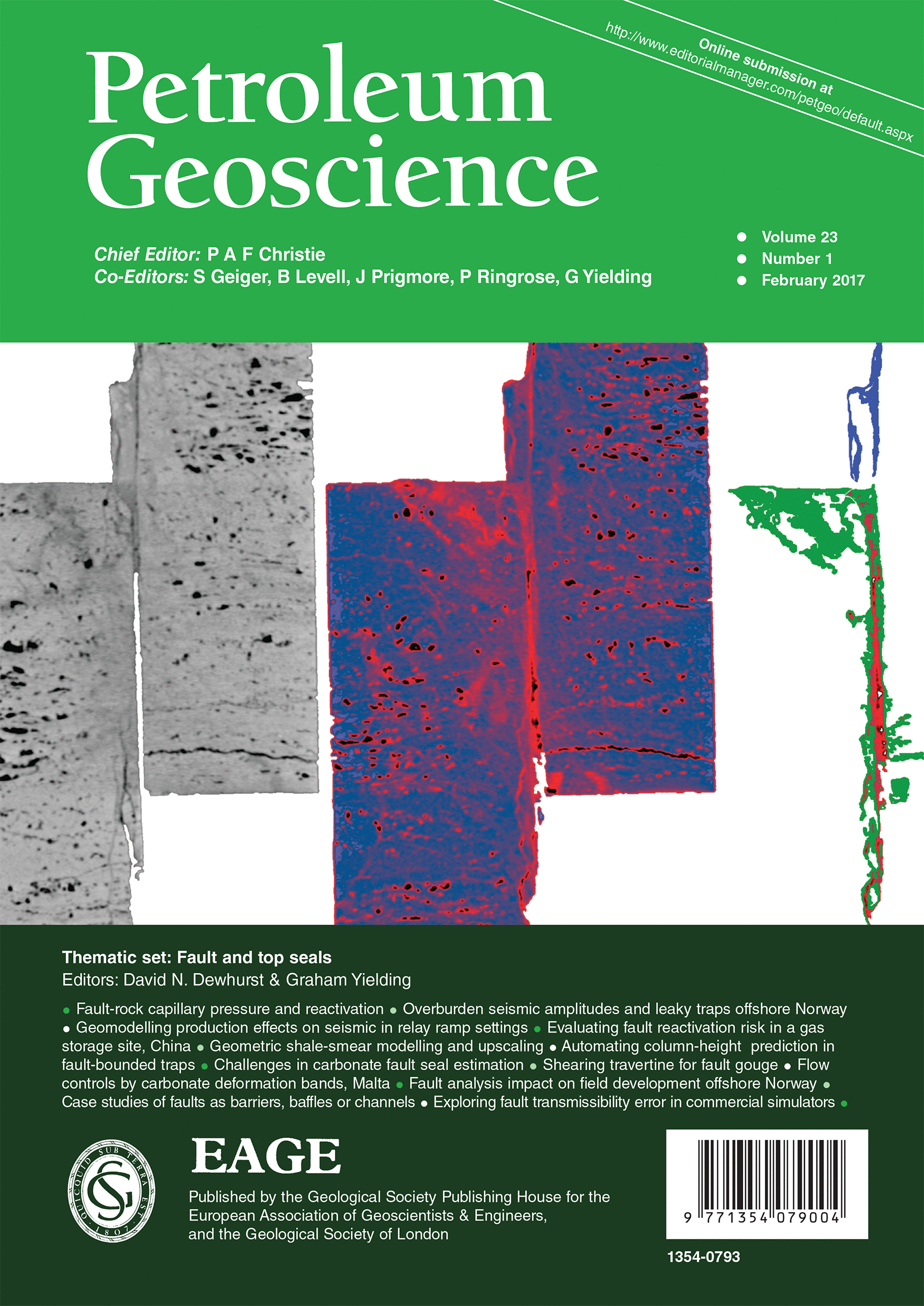
Full text loading...
Relay ramps can act as conduits for fluid flow in producing hydrocarbon reservoirs, but the two bounding faults are often at the limit of seismic resolution. To study the impact of relay ramps and their fluid composition on seismic data, we present an integrated workflow combining flow simulation in a geomodel of an outcrop relay ramp, forward seismic modelling and seismic-attribute-based volume extraction. In the chosen outcrop of the Arches National Park (Utah, USA), the petrophysical properties are conditioned by deformation bands present in the sandstone, and are used to run a simple water injector–oil producer fluid-flow simulation. Pre-stack depth-migration seismic images are obtained at t = 0, t 1 = 10 and t 2 = 20 years of the flow simulation. The seismic image porosity changes at t = 0 when the model is oil-saturated, whereas the water–oil contacts have stronger amplitude contrasts at later stages. With an adapted attribute-based workflow, we are able to extract geobodies corresponding to the faults and the relay ramp from the three seismic cubes. By varying workflow parameters, we also show reservoir and acquisition conditions that can affect the resolution of the relay ramp on the seismic image either positively or negatively.

Article metrics loading...

Full text loading...
References


Data & Media loading...

